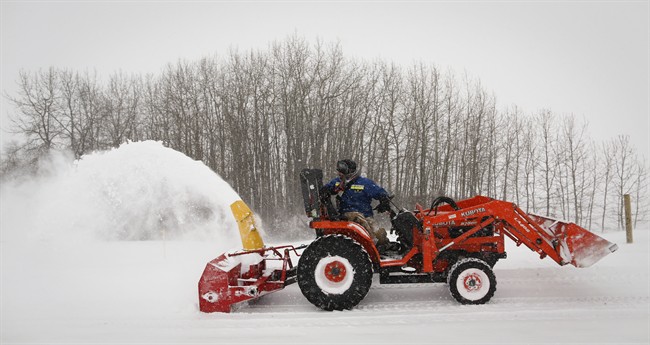EDMONTON — Canadians can expect a warm winter season and less precipitation later this year as the effects of El Niño will be felt in Canada, weather experts say.

According to Environment Canada’s Senior Climatologist David Phillips, although this super El Niño is a tropical, pacific kind of meteorological event currently affecting some areas in Australia, India, and Peru, it will eventually impact Canada.
“We can’t blame any of the forest fires, or the drought, or the storms that are occurring in various parts of the country on El Niño,” said Phillips. “It is the Low Countries … close to the equator that are feeling … the true effects of El Niño right now. They generally come late fall, winter, and early spring to us.”
“For Canada and for parts of the northern part of the United States, it tends to produce some warmer, drier conditions,” he said.
READ MORE: El Niño: Is this finally the year we get a mild winter?
Phillips explains an El Niño is not a one-off event that goes away; some years we have El Niños that have more of an impact than in other years. Sometimes they’re weak and sometimes they’re strong.
El Niño occurs when shifting wind patterns and wave activity push warm water near the equator, in the Pacific, towards the Atlantic. The changing pattern of the ocean causes a shift in the atmospheric circulation, which in turn, affects weather around the world.
In the past 60 years, Phillips estimated there have been six strong El Niños. The effects of each have been mostly the same.
“In the west, what we found, for the winter period particularly, was that … five of those six were warmer than normal and five of the six were also dryer than normal. Now, they weren’t record warmth, they weren’t record dry, but they certainly, the flavour of the season, the cold season, had a tendency to be tempered by those more Pacific breezes and fewer, Arctic breezes.
“Generally speaking, they can be translated into a balmier, less brutal winter and fewer deaths from cold waves that you find in an El Niño kind of a winter.”
For farmers, this may be a warning they need to consider the chance of even less precipitation than we’ve seen this year.
“If everything unfolds like it has in the past, then my sense is that precipitation deficit of moisture will be an issue for farmers next year.
“The likelihood is that farmers will be challenged, but, my gosh, nature has a way of sneering at us and might very well say ‘well, all the those forecasts are wrong.’
“It may be a wet kind of a growing season next year,” Phillips said.
He said the second year of a drought generally tends to be worse than the first – even if more precipitation falls – because the reserves are already depleted.
“Coming out of the growing season this year water levels will be down, the ground water will not be filled, the dugouts and the slews and the potholes on the prairies will have less water in them. If you combine that with a fall and a winter and a spring that tends to be on the dry side, well then there is not that cushion in the bank, that water in the bank that would help farmers or growers or ranchers next year.”
READ MORE: Dry conditions hurt hay, beef prices; banks offer break to farmers
But, Alberta farmers should not be too worried as long as they can prepare in advance for potentially having less moisture, Phillips says.
“Trying to guess what Mother Nature is going to do to us can be a real challenge, but certainly it’s not as if it’s just a poke in the dark.
“You can actually look at your current situation, your antecedent conditions and make some kind of educated guess as to how the thing is going to unfold. Therefore, your strategy… may be tempered somewhat by existing conditions.”
“Western farmers don’t lose their crop in January. So because January or February tend to be drier doesn’t mean it’s game over…but certainly some good rains in May or June next year could undo any of the adverse effect that the El Niño might cause.”

Comments